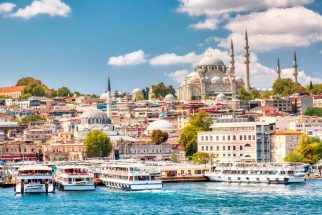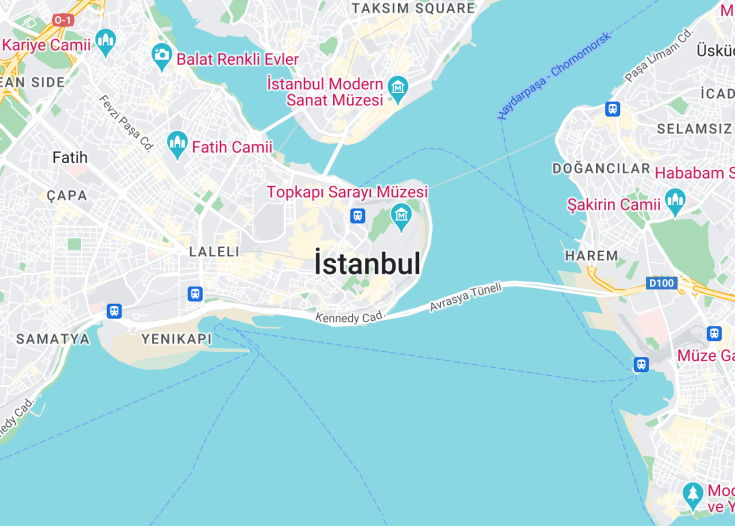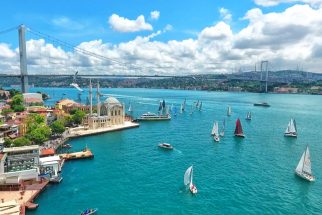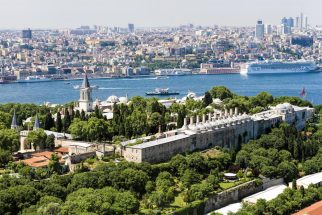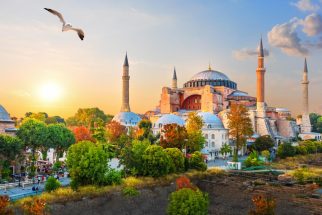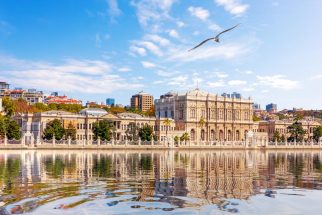Istanbul is the largest city and the capital of Turkey. It is placed on both sides of the Bosphorus strait, European and Asian side. It is one of top tourist destinations worldwide and is home to several Unesco World Heritage Sites. You can admire the most splendid examples of Byzantine art and architecture in the world, immerse yourself in a sort of menagerie while walking among imperial palaces and kiosks or get lost in the labyrinth of the Grand Bazar – and this only on the first day. The city offers several and exciting itineraries .
4 days in Istanbul is the perfect amount of time to spend in this wonderful city which is split between Europe and Asia.
The best time to visit Istanbul is either April-May or mid September to October-end when the days are longer, drier, and sunnier, but not as hot as in the peak of summer. Temperatures range between 12°C and 25°C and there are a few brief showers occasionally. These months also avoid the large tourist crowds.
Top things to do & see in Istanbul
Select the following sights and activities to discover best tickets and tours available in Istanbul.
The city of Istanbul
| Country | Turkey |
| Region | Marmara |
| Time in Istanbul | UTC+3 (TRT) |
| Language spoken |
Turkish English |
| Currency | Turkish lira |
| Religion | Islam |
| Airports | Istanbul Airport |
The city has regained vigor from an urban planning point of view: magnificent monuments such as the Küçük Aya Sofya built by Justinian and Theodora and Mehmet the Conqueror’s Ceramic Pavilion have been restored with the care they deserve and charming neighborhoods such as Karaköy and Balat have been rediscovered, their cobbled streets cleaned up and their buildings restored to the ancient splendor.
Where is Istanbul?
Istanbul, formerly known as Constantinople, is the largest city in Turkey, serving as the country’s economic, cultural and historic hub. The city straddles the Bosphorus strait, lying in both Europe and Asia. Istanbul is the most populous European city, and the world’s 15th-largest city.
When was Istanbul founded?
The history of the city begins around 660 BC when Greek settlers from Megara colonized the area and established Byzantium on the European side of the Bosphorus. In 330 CE, the Roman emperor Constantine the Great made it his imperial capital, renaming it first as New Rome (Nova Roma) and then as Constantinople (Constantinopolis) after himself. The city grew in size and influence, eventually becoming a beacon of the Silk Road and one of the most important cities in history. The city served as an imperial capital for almost 1600 years and in 1923 (after the Turkish War of Independence) Ankara replaced the city as the capital of the newly formed Republic of Turkey. In 1930, the city’s name was officially changed to Istanbul, the Turkish rendering of the appellation Greek speakers used since the eleventh century to colloquially refer to the city.
History, art, architecture
It was a golden city, but the glass block of the last few decades had disfigured it and many old neighborhoods seemed lost. The magnificent Costantinople lay under the greyness of a long abandonment, but for some years a wide-ranging architectural restoration work has been undertaken: removed from dust and oblivion, the colours of the legendary past return to shine and the sunsets are still unforgettable on these tongues of the sea where once Venetian and Genoese merchants kept their warehouses and where the huge suspension bridge over the Bosphorus now stands. It is certainly worth taking a boat trip to admire the profile of the minarets from afar, to venture on the Asian side or even simply to enjoy the spectacle of life that takes place on the waters of the strait, in the midst of the swarming of water buses and of oil tankers. High above our heads, the unstoppable traffic of the dizzying Atatürk bridge flows, which has connected the two continents for over twenty years.

